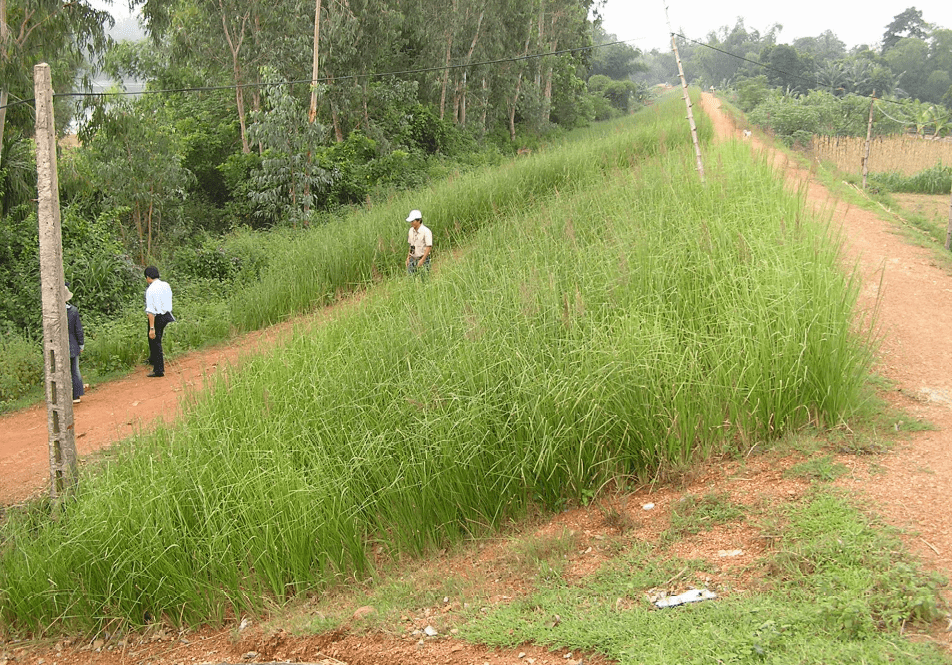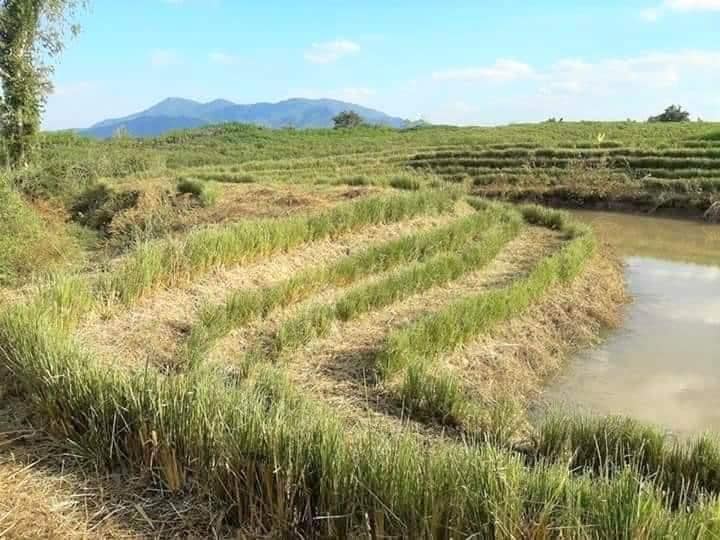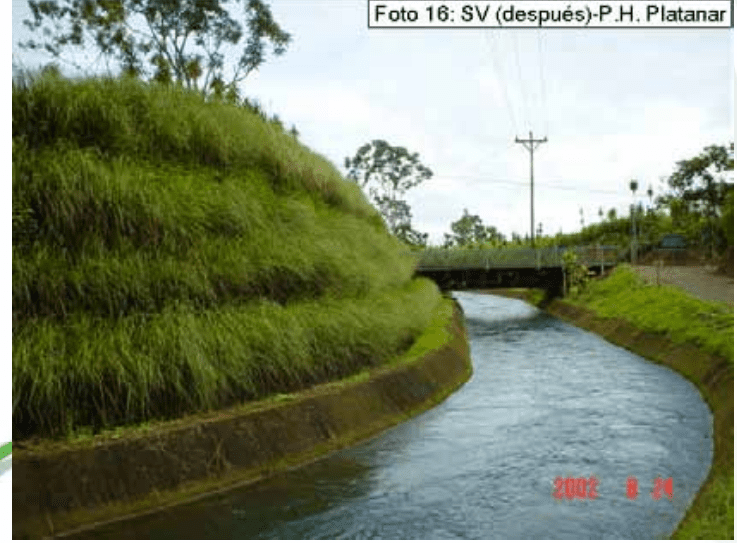Vetiver System Applications for Canals, Dykes and Levees
Introductory Photo Essay VS_Flood_lowland.pdf (vetiver.org)
VGT can be applied to stabilize canal banks , dykes and levees and is particularly useful in low lying coastal areas where salinity can be a problem. Vetiver’s saline tolerance allows it to be grown on coastal dykes and brackish water estuaries. In applying it to such structures vetiver serves multi-purpose uses. First it stabilizes and protects the structure from erosion, (particularly useful for stabilizing the non-water facing side of the structure as it prevents erosion when flood water overtops the bank). It also serves as a living barrier along the top edges of the embankment for when the top is used as a road. Field experience from the Mekong Delta in Vietnam indicates that vetiver helps dry out the top of the bank and reduces possible subsidence. Vetiver can also be used to stabilize the “flood/storm refuges” that are constructed as part of flood/storm barriers.



Flood levee in Vietnam stabilized with vetiver
Sea dyke erosion on coastal zone of Vietnam untitled (vetiver.org)
Webinar: Can the Vetiver System be used for coastal protection in West Bengal’s Sundarbans?